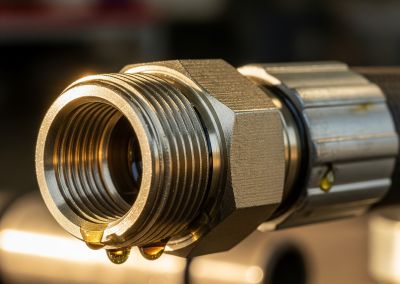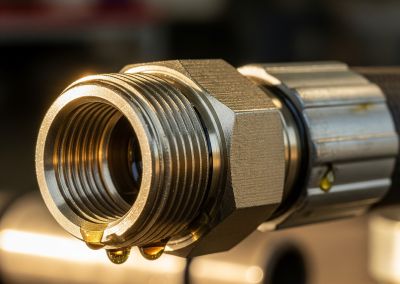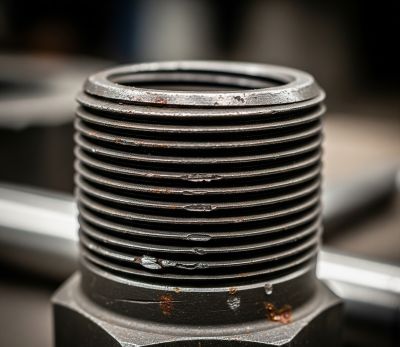When it comes to plumbing, the smallest details can make a big difference—especially when dealing with thread types. Using the wrong fitting can lead to leaks, wasted time, and costly repairs. Two common thread types that often cause confusion are MHT (Male Hose Thread) and MIP (Male Iron Pipe).
Understanding the differences between these thread types is essential for anyone working with plumbing components, whether you’re a DIY homeowner or a professional contractor. In this guide, we’ll break down everything you need to know about MHT and MIP threads, their uses, compatibility, and how to choose the right one for your project.
What is MHT (Male Hose Thread)?
MHT stands for Male Hose Thread. It refers to a specific type of threaded fitting commonly used with hoses. The threads are external (male) and designed to connect to a female hose thread.
What Does MHT Mean in Plumbing?
In plumbing, MHT refers to the thread found on outdoor spigots, garden hose bibs, and other hose-compatible fixtures. It’s not typically used for high-pressure or sealed applications, but rather for quick and easy hose connections.
Common Uses
-
Garden hose connections
-
Outdoor faucets and hose bibs
-
Sprinkler systems
-
Washing machine hookups (some models)
Thread Size and Compatibility Standards
MHT threads are usually 3/4″ GHT (Garden Hose Thread), which differs from standard pipe threads. They have a straight (non-tapered) design and typically rely on a rubber washer to create a seal, rather than thread sealant like Teflon tape.
Advantages of MHT Fittings
-
Quick, tool-free connections
-
Easy to attach/detach hoses
-
No thread sealant required
-
Standardized size for garden equipment
What is the Difference Between MHT and MPT?
MPT (Male Pipe Thread) refers to tapered threads used in plumbing systems (often NPT-compliant), while MHT refers to straight threads designed for hose fittings. The two are not interchangeable. MPT threads need sealing tape or compound, while MHT uses washers for sealing.
What is MIP (Male Iron Pipe)?
MIP stands for Male Iron Pipe, another type of external thread. It is used in a wide range of plumbing applications, primarily indoors, and is compatible with FIP (Female Iron Pipe) fittings.
Common Uses
-
Water supply lines
-
Gas piping systems
-
Water heaters
-
Plumbing rough-ins and extensions
Thread Size and Compatibility Standards
MIP threads follow the NPT (National Pipe Thread) standard, which is tapered, allowing for a tight seal as the thread is tightened. Common sizes include 1/2″, 3/4″, and 1″.
Advantages of MIP Fittings
-
Strong, pressure-resistant seal
-
Suitable for gas and water lines
-
Wide range of sizes and materials
-
Compatible with NPT plumbing systems
What is the Difference Between MIP and MPT?
In practice, MIP and MPT are often used interchangeably, since both refer to male-threaded, NPT-compatible pipe threads. Technically, MIP emphasizes iron pipe usage, while MPT is a broader term that can include plastic or brass. Functionally, both types connect to FIP fittings.
Key Differences Between MHT and MIP
|
Feature |
MHT (Male Hose Thread) |
MIP (Male Iron Pipe) |
|
Thread Type |
Straight (non-tapered) |
Tapered (NPT-compliant) |
|
Sealing Method |
Rubber washer |
Thread sealant (Teflon tape or pipe dope) |
|
Common Applications |
Garden hoses, outdoor spigots, irrigation |
Indoor plumbing, gas lines, water supply systems |
|
Pressure Rating |
Low to moderate pressure |
High pressure, suitable for gas and water lines |
|
Typical Size |
3/4″ GHT (Garden Hose Thread) |
1/2″, 3/4″, 1″ NPT (varies) |
|
Connection Type |
Quick-connect with hand tightening |
Requires wrench for tight seal |
|
Material Compatibility |
Commonly brass or plastic |
Brass, galvanized steel, PVC, copper |
|
Use of Thread Tape |
Not required (uses washer) |
Required for leak-proof seal |
|
Location of Use |
Outdoor and temporary setups |
Indoor, permanent plumbing systems |
|
Compatibility |
Only with hose thread fittings |
Compatible with NPT/FIP threaded components |
How to Identify MHT and MIP Threads
Visual Inspection Tips
-
MHT: Wide, straight threads with flat sealing face
-
MIP: Tapered threads with tighter spirals
Measurement Tools
-
Use a thread pitch gauge or a caliper
-
Compare to known standards or labeled parts
Labeling and Markings
-
Look for MHT, GHT, MIP, or NPT markings on packaging
-
Plumbing parts often indicate thread type for clarity
Choosing the Right Thread for Your Project
When to Use MHT
-
Outdoor hose bibs and connections
-
Garden irrigation systems
-
Temporary hose attachments
When to Use MIP
-
Indoor plumbing connections
-
Permanent water/gas line installations
-
Applications requiring pressure sealing
Safety and Leak-Prevention Considerations
-
Use washers with MHT, and thread tape with MIP
-
Do not over-tighten, especially on plastic fittings
Adapters and Converters
-
MHT to MIP adapters are available
-
Always use the correct adapter to avoid thread damage and leaks
Common Mistakes to Avoid
-
Mixing thread types (e.g., forcing MHT into an MIP fitting)
-
Over-tightening can crack fittings or damage threads
-
Using Teflon tape on MHT threads (they don’t need it and may not seal properly)
Tools and Accessories for Working with MHT and MIP
-
Wrenches (adjustable or pipe)
-
Thread sealants (Teflon tape, pipe dope—for MIP only)
-
Thread gauges to identify types
-
Adapters for converting MHT to MIP or vice versa
FAQs
Can you use MHT fittings for high-pressure water?
Not recommended. MHT is designed for low to moderate pressure (like garden hoses), not for high-pressure indoor systems.
Are MHT and MIP threads interchangeable?
No. They have different thread types and sealing methods. Use an adapter if you need to connect them.
Do MIP fittings require Teflon tape?
Yes. Since MIP uses tapered threads, Teflon tape or thread sealant is needed for leak prevention.
Is MIP the same as IPS?
They are closely related. IPS (Iron Pipe Size) refers to pipe sizing, while MIP refers to the thread type. IPS pipes can have MIP threads.
Conclusion
MHT and MIP fittings serve different purposes and are not interchangeable without adapters. MHT is ideal for outdoor hose connections, while MIP is the go-to for indoor plumbing and high-pressure applications. Understanding their differences helps ensure leak-free, safe, and efficient installations.
Always double-check thread types before purchasing fittings or attempting a connection. Matching the correct threads the first time can save you time, money, and frustration.
Post time: Aug-05-2025




